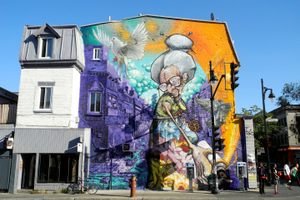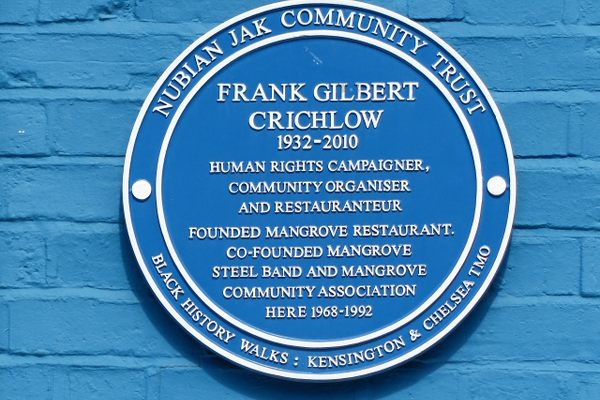About
Jackie Robinson is a baseball legend and civil rights icon, known for breaking major league baseball’s longstanding color barrier while with the Brooklyn Dodgers. However, before Jackie became known as #42, he was #9, as a member of the Montreal Royals, an affiliated minor league franchise. Jackie Robinson’s season in Montreal is immortalized in a Boulevard Saint-Laurent mural.
When Branch Rickey signed Jackie Robinson, he had played for one post-war season with the Kansas City Monarchs. Signing a Black baseball player to integrate the game was a great experiment, and before Jackie was ready to play for the Dodgers, the team had to make sure that he was a good fit both on and off the field to handle the relentless pressure that was to come. Before the 1946 season, he was assigned to their Triple-A International League franchise, the Montreal Royals, where he became the first player to integrate affiliated ball.
In many ways, Montreal was the perfect stop for Robinson on his path to immortality. Integrated games had long been played in the city by barnstorming baseball teams, and games were played in Canada, far from the segregated south. Even so, life in the minors proved a challenge. Spring training in Florida was a grim reminder of what lay ahead, and even once the season began, Jackie faced hostility both from opposing players and his own teammates. He was subject to vitriol and racism, especially when the Royals were on the road in more southern cities. Robinson reported feeling stressed and burned out by August.
However, the sustaining resource was that Montreal had fallen in love with Jackie Robinson. The team was a success, leading the league nearly wire-to-wire, and Robinson was by far the best player. He was idolized, frequently chased down by adoring fans and asked to sign hundreds of programs after the game. As newlyweds and expecting parents, Jackie and Rachel Robinson settled into the Villeray neighborhood, where neighbors helped Rachel while Jackie was on the road. This culminated in Jackie winning the 1946 Junior World Series with the Royals, being mobbed by hundreds in celebration after the Game Six victory. As sportswriter Sam Maltin famously noted after the game, it was the first time many had seen a mob of white people chase down a Black man, “not because of hate, but because of love.”
Although his time in Montreal lasted a single season, Jackie Robinson is still recognized at sites across the city. In 2017, as part of Montreal’s Mural Fest, Robinson was recognized with a photorealistic large-scale mural produced by street artist Fluke of Ashop Productions. Known for giant ribbonlike brushstrokes, Fluke’s goal with the work was to make it look less like graffiti street art and more like a canvas, preserving the realistic look of the heroic figure. The mural honors Jackie’s time in Montréal, ensuring that the city’s love and reverence for its great athlete will continue on.
Related Tags
Know Before You Go
In addition to the downtown mural, other tributes to Jackie Robinson exist throughout the city, including a plaque at his Montréal home, a small monument at the former site of the Royals’ stadium, Stade De Lorimier, and a statue on the grounds of Stade Olympique.
Published
December 8, 2023


























